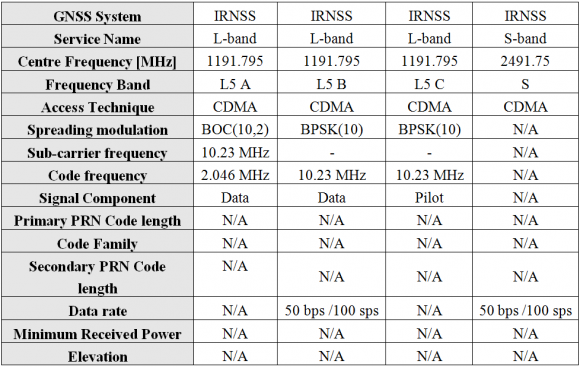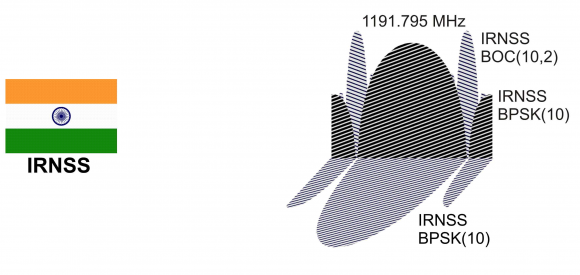If you wish to contribute or participate in the discussions about articles you are invited to contact the Editor
IRNSS Signal Plan
| Fundamentals | |
|---|---|
| Title | IRNSS Signal Plan |
| Author(s) | J.A Ávila Rodríguez, University FAF Munich, Germany. |
| Level | Advanced |
| Year of Publication | 2011 |
The final definition of all the IRNSS signals has not been concluded yet and investigations are still on course. We summarize in the next table the first proposal for the Signal and Frequency Plan presented in November 2006 during the First ICG Meeting in Vienna.
Given the similarity with the Galileo signals in terms of services that IRNSS might be providing, the same convention as for Galileo was employed. That is A for the PRS and B and C for the Open Service data and pilot signals respectively. Furthermore, the spectral properties of the IRNSS signal would be as follows:
To conclude, it is interesting to mention that the Indian Satellite Navigation Programme has been doing much work in the past years on ionospheric and tropospheric modelling in the Region of India what could mean that IRNSS does not plan to use dual frequency at least in the first generation.
Moreover, India also plans to transmit similar signals for the S-band to those we have just described for the L5 band. The carrier frequency of S-band is at 2491.75 MHz. The modulation schemes and data rates would be the same as for L5 but no final decision on the other parameters has been made yet. In addition, it seems that India also plans to transmit signals in L1 as announced during the second Meeting of the ICG in India, in 2007.
As a summary of the studied regional satellite systems so far, the signal plan of QZSS and IRNSS is shown in the next figure



